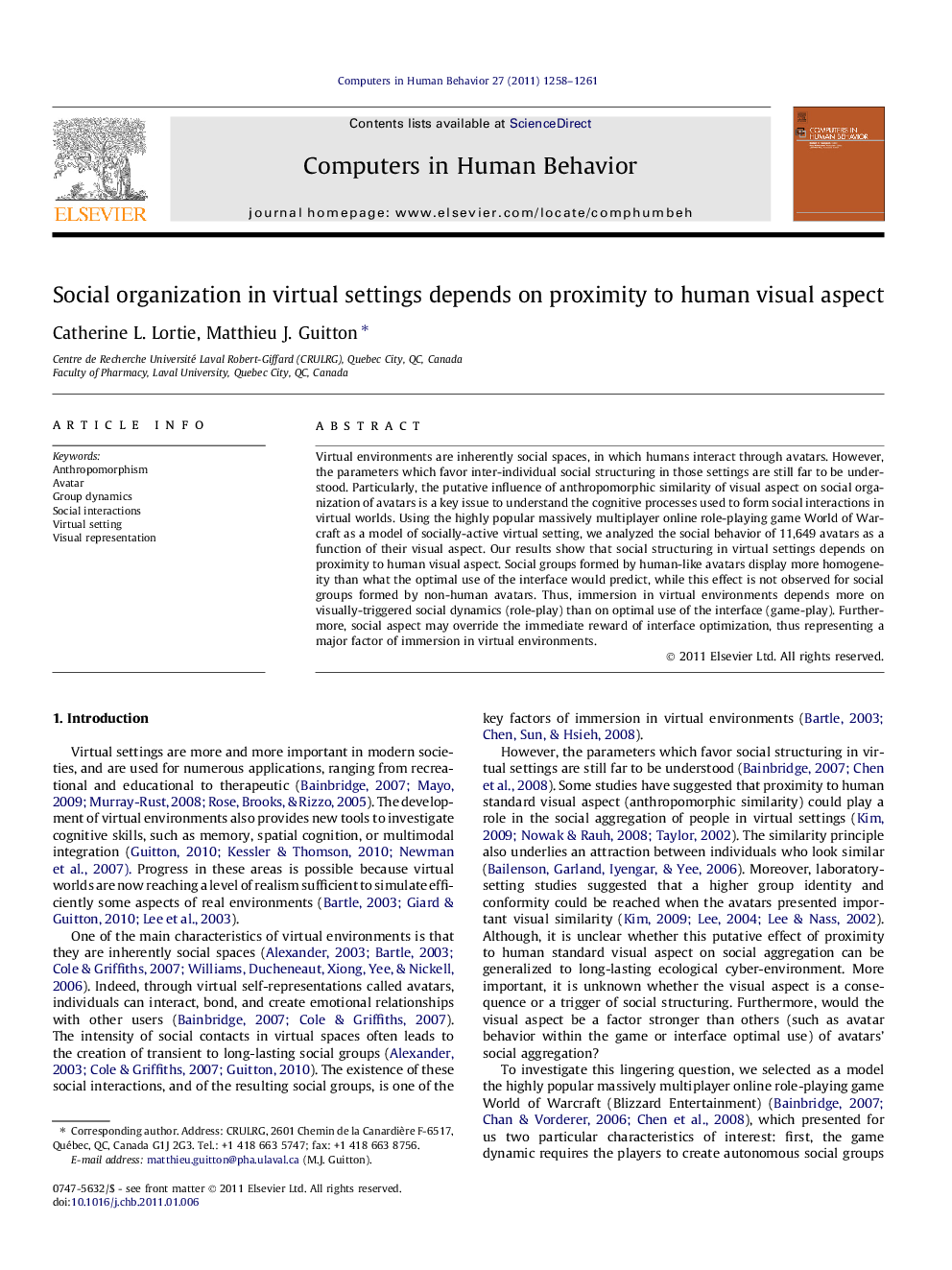| Article ID | Journal | Published Year | Pages | File Type |
|---|---|---|---|---|
| 351735 | Computers in Human Behavior | 2011 | 4 Pages |
Virtual environments are inherently social spaces, in which humans interact through avatars. However, the parameters which favor inter-individual social structuring in those settings are still far to be understood. Particularly, the putative influence of anthropomorphic similarity of visual aspect on social organization of avatars is a key issue to understand the cognitive processes used to form social interactions in virtual worlds. Using the highly popular massively multiplayer online role-playing game World of Warcraft as a model of socially-active virtual setting, we analyzed the social behavior of 11,649 avatars as a function of their visual aspect. Our results show that social structuring in virtual settings depends on proximity to human visual aspect. Social groups formed by human-like avatars display more homogeneity than what the optimal use of the interface would predict, while this effect is not observed for social groups formed by non-human avatars. Thus, immersion in virtual environments depends more on visually-triggered social dynamics (role-play) than on optimal use of the interface (game-play). Furthermore, social aspect may override the immediate reward of interface optimization, thus representing a major factor of immersion in virtual environments.
